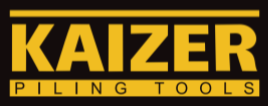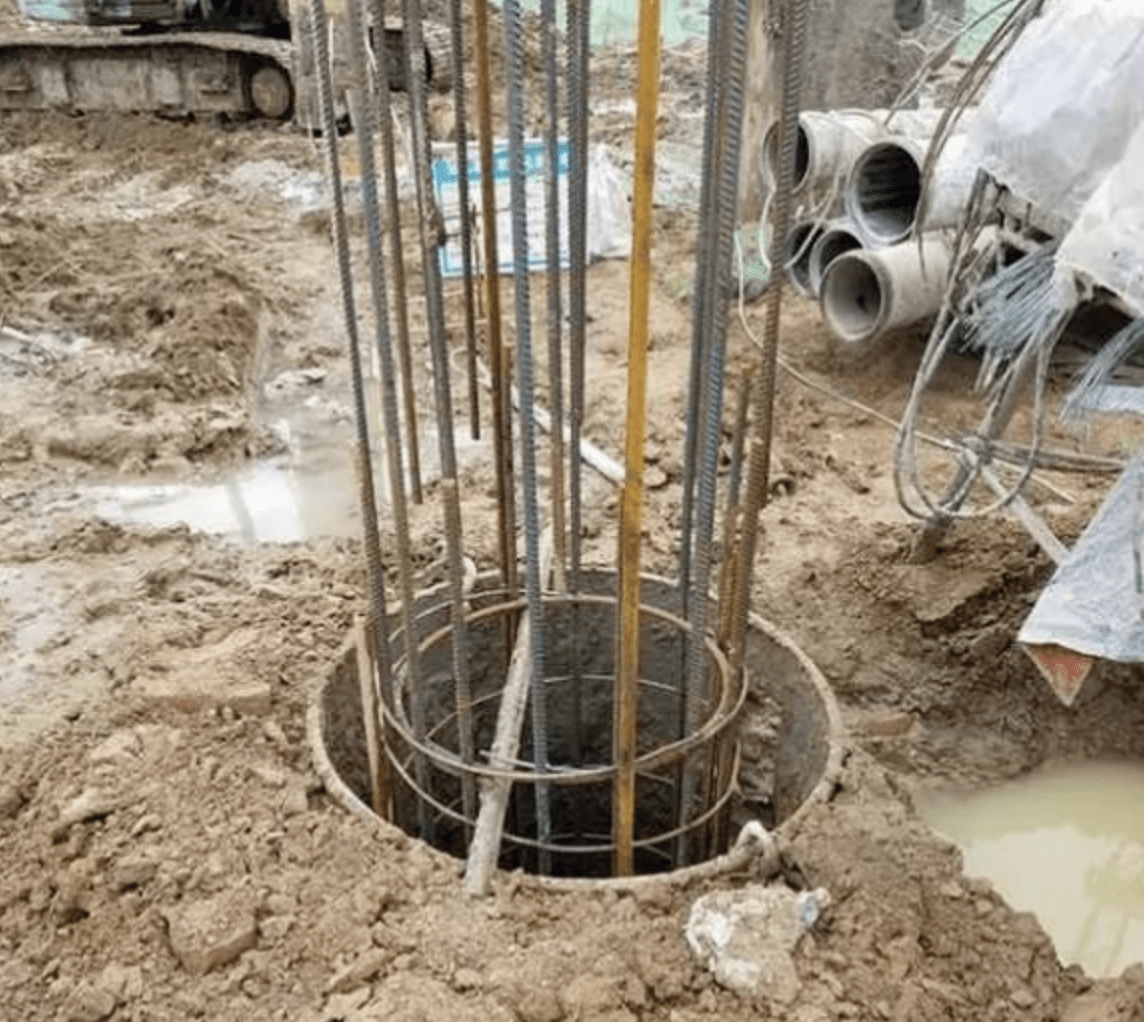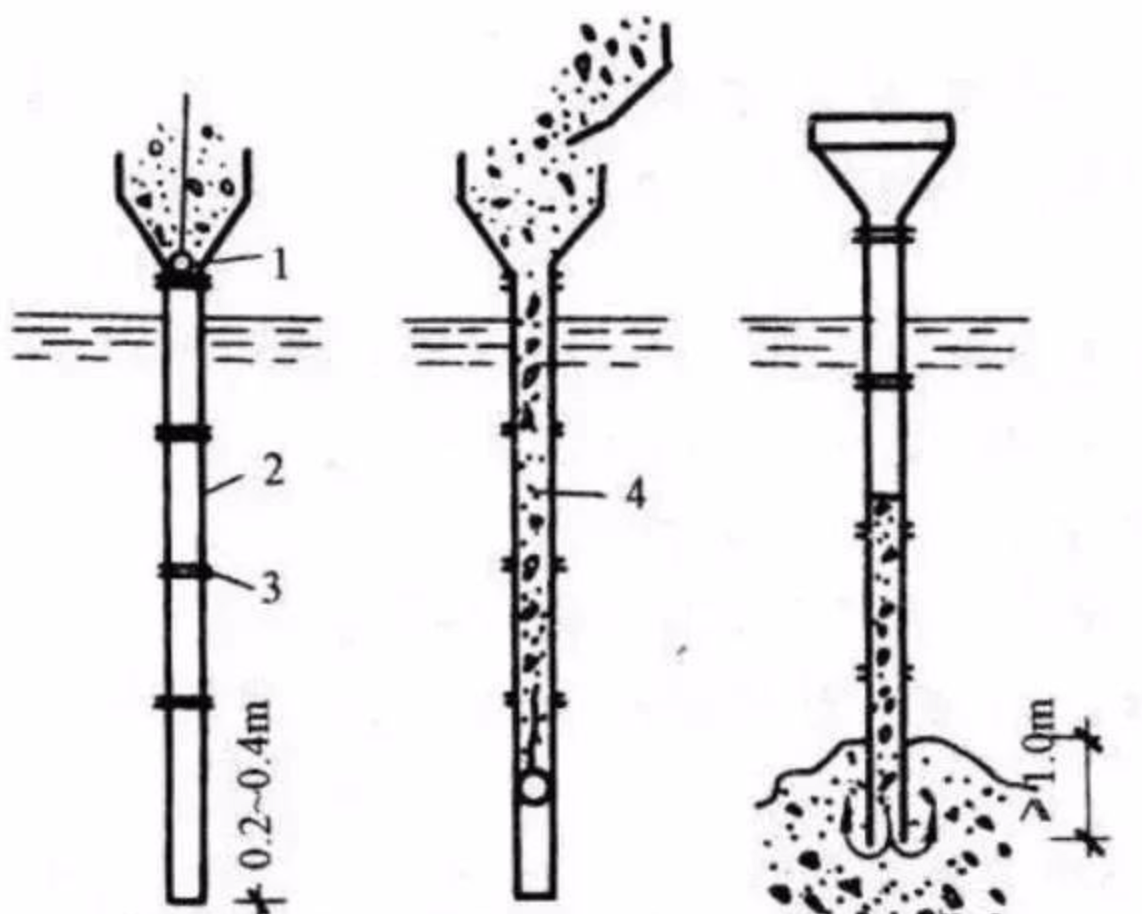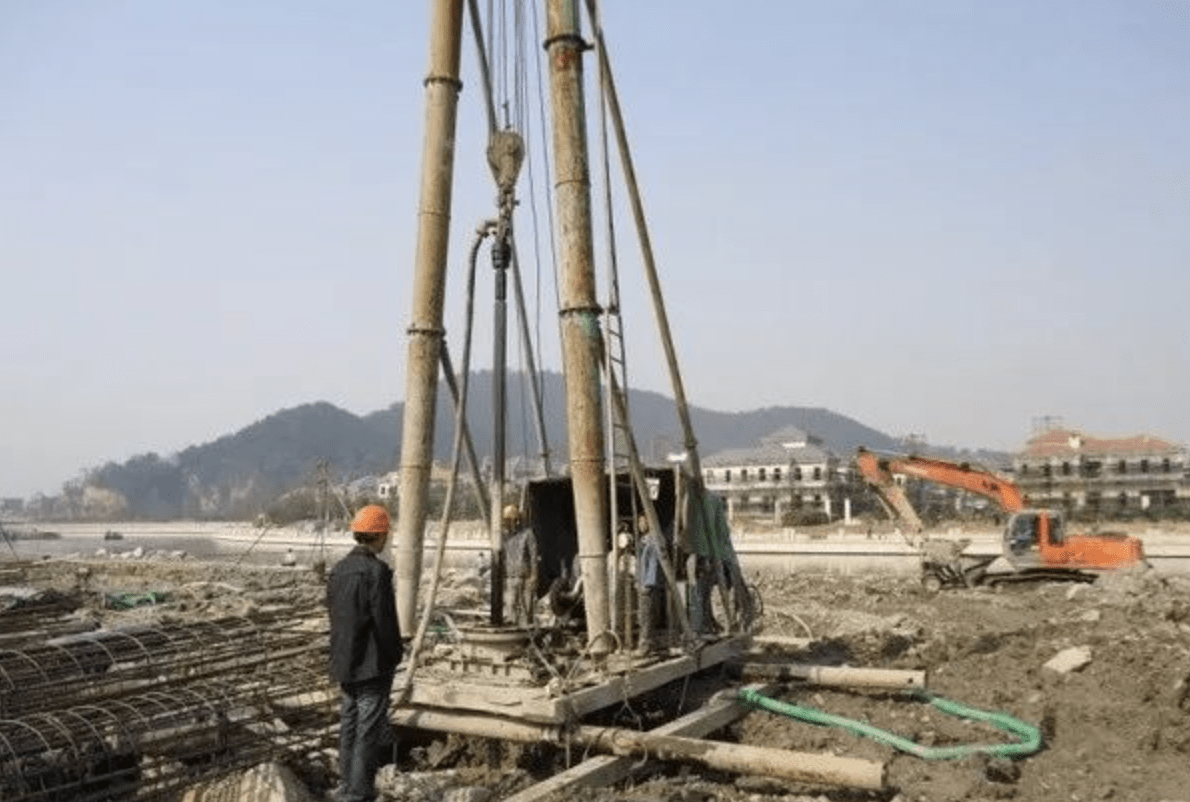During the construction of bored piles, the uplift of rebar cages frequently occurs, ranging from minor displacements of a few centimeters to severe cases where the entire cage floats several meters. This phenomenon poses significant risks to engineering quality.
Analysis of Rebar Cage Uplift Causes
- Improper Fixation of Suspension Bars – If the upper suspension bars of the rebar cage are not securely anchored at the borehole opening, they may get caught and lifted when withdrawing the tremie pipe.
- Excessive Upward Concrete Flow – When concrete reaches the bottom of the rebar cage, excessive pouring speed with shallow tremie pipe embedment generates a strong upward force, lifting both the pipe and the cage.
- Excessive Tremie Pipe Embedment – If both the concrete surface and tremie pipe are inside the rebar cage, excessive embedment depth increases uplift risk.
- Poor Concrete Fluidity – If initial concrete batches exhibit segregation, short setting time, or slump loss, reduced fluidity can cause partial solidification. When this stiffened concrete contacts the cage bottom, it may push the cage upward.
- Sand Layer Collapse – In fine sandy strata, low-density slurry allows collapsed sand to accumulate on the concrete surface, forming a supporting layer that lifts the cage as concrete rises.
Preventive Measures Against Rebar Cage Uplift
- Monitor Suspension Bars Closely – Observe any upward movement of suspension bars during pouring. If uplift is detected, slow the pouring speed and use the rig’s winch to perform “slow lift, quick drop” tremie pipe movements to reposition the cage.
- Reinforce Suspension Bars – Increase the diameter and number of suspension bars, add counterweights at the borehole opening, or weld them to the casing.
- Control Tremie Pipe Embedment Depth – Maintain a shared embedment depth (tremie pipe within the cage) under 6m. Reduce embedment depth when the pipe is above the safe distance to minimize uplift risk.
- Measure Concrete Surface Height – Continuously monitor concrete elevation and regulate pouring speed to control upward flow and reduce lifting force on the cage.
- Optimize Concrete Slump – Maintain a slump between 18–22cm for underwater concrete to ensure workability and fluidity, preventing premature stiffening that could lift the cage.
- Adjust Slurry Density – Keep slurry density at 1.0–1.1. Excessive density increases buoyancy and forms thick scum layers that may carry the cage upward. Use high-quality bentonite for slurry preparation.
- Ensure Proper Cage Alignment – Avoid cage bending or misaligned connections, as these contribute to uplift. Strict quality checks are essential.
- Install Uplift Warning Indicators – Weld a vertical indicator bar to the cage extending above the slurry. If the bar rises, immediately take corrective measures to reposition the cage.
By implementing these measures, construction teams can effectively mitigate rebar cage uplift, ensuring structural integrity and compliance with quality standards.




